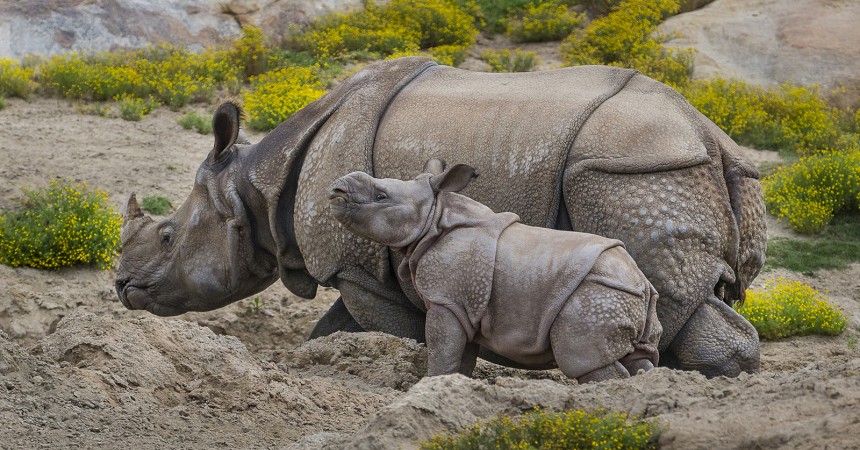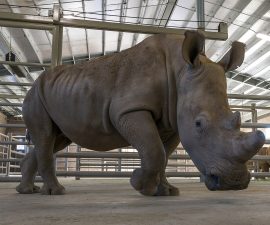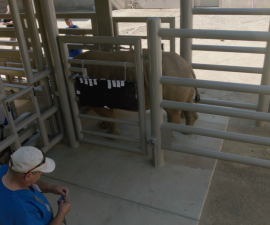Calf Shows Confidence When Meeting Older Brother, Other Female Rhinos
A 9-week-old greater one-horned rhino calf made her debut at the San Diego Zoo Safari Park today, under the watchful eye of her attentive mother. The pair came out of the Park’s maternity corral, and mother Alta led her calf around the Safari Park’s 40-acre Asian Plains habitat. While the calf walked, a layer of young, pink skin could be spied underneath the folds of her thickening, armor-like, dark gray top layer of skin.
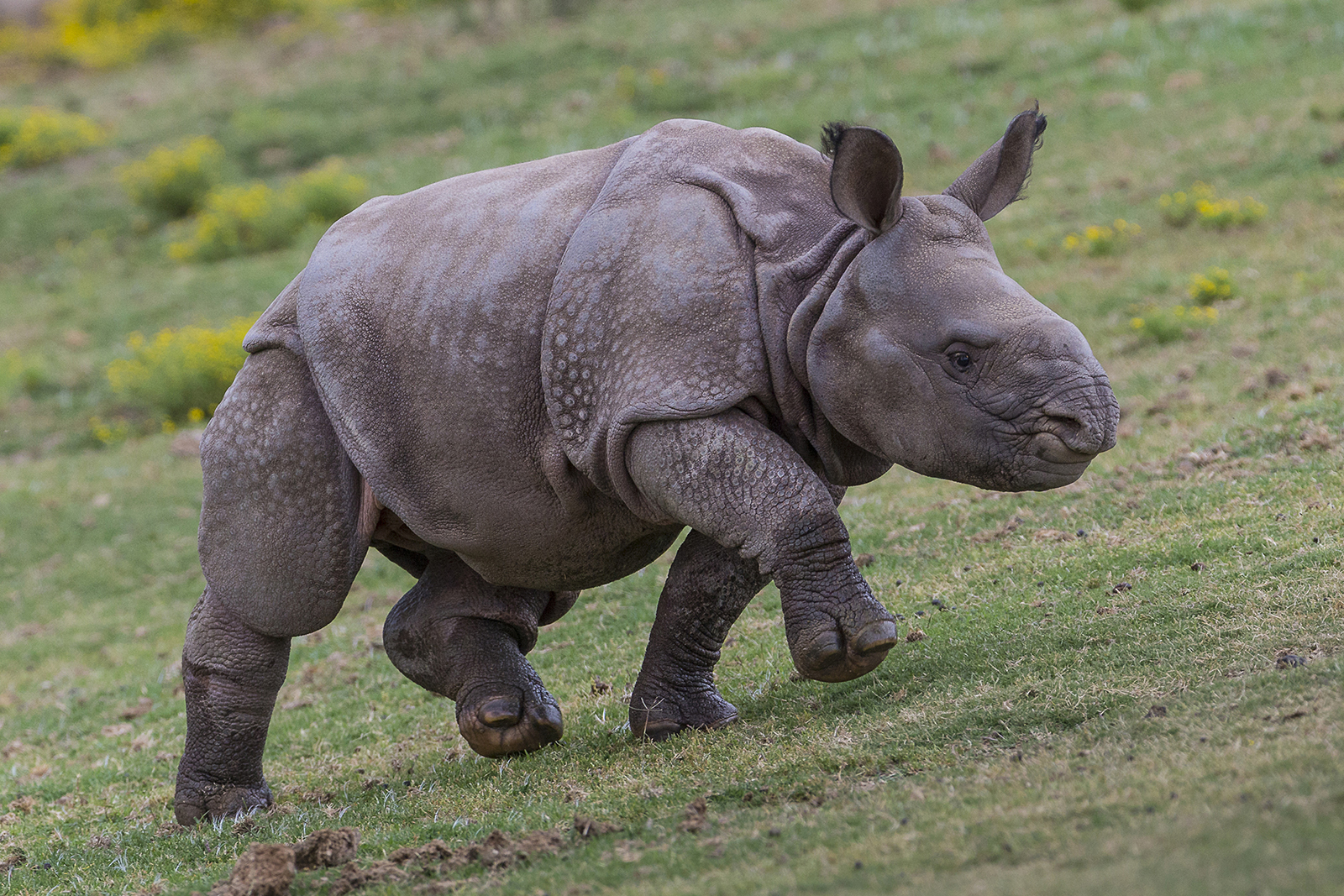
The female calf, named Anandi—meaning “joyful” in Hindi—stayed close to her mother as mom led the calf to meet the other rhinos in the exhibit, including Anandi’s brother, Parvesh. The 2-year-old Parvesh was immediately interested in his mother and his new sister—and when Anandi playfully charged her much larger brother, he ran from her, showing signs that he will likely be a great playmate for the calf.
Anandi was born Feb. 24. She and her mother have been in an off-exhibit area, to allow quiet time for them to bond. The calf’s father, Bhopu, was placed into a barn area, allowing the baby to become acclimated and comfortable with the exhibit. Animal care staff expect that he will return to the field by the end of the week.
The greater one-horned rhinoceros was once widespread in Southeast Asia, but it is now found only in India and Nepal. It differs from other rhino species as it has an armor-plated appearance—but that “armor” is actually a layer of skin that has many folds. The greater one-horned rhino is listed as vulnerable by the International Union for Conservation of Nature, primarily due to habitat loss, poaching threats and the growing illegal traffic in rhino horn. There are only an estimated 3,300 greater one-horned rhinos remaining in the wild, with over 70 percent of the population living in one reserve: Kaziranga National Park in India.
San Diego Zoo Global has been working for over 40 years, along with other accredited zoos, to keep a sustainable population of rhinos safe under human care while working to protect them in sanctuaries in the wild. Anandi is the 69th greater one-horned rhino born at the Safari Park since 1975, making the Park the foremost breeding facility in the world for this species.
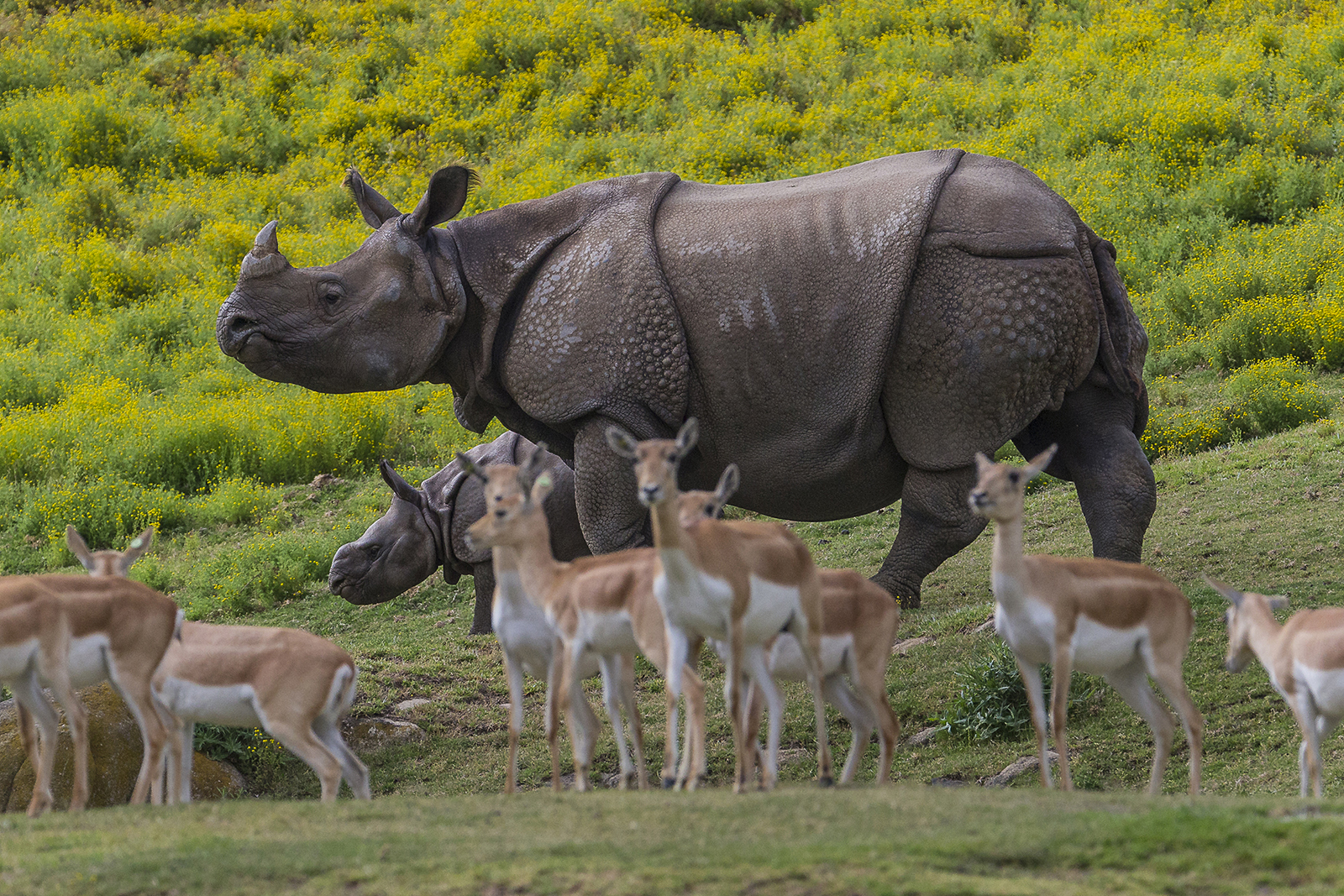
Rhinos are very important to the ecosystems in which they reside. Greater one-horned rhinos live in humid, swampy, tall-grass habitats. These large herbivores graze on the grass, which helps to maintain the habitat—increasing plant diversity and providing grazing areas for other animals. Rhinos digest large volumes of plant material and disperse the seeds in their dung, thus playing an important role in the health and maintenance of vegetation in their habitat. As rhinos disappear from their habitats, their absence impacts other species, such as birds, reptiles, mammals and plants.
Visitors to the Safari Park may see Alta and Anandi roaming their Asian Plains exhibit from a Caravan Safari or Private Cart Tour.

